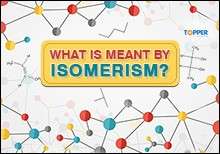NEET 2022 Post-Paper Analysis - 17th July

Check the NEET 2022 post-paper analysis here, whose difficulty level was higher than last year.
By Topperlearning Expert 17th Jul, 2022 | 05:00 pm
ShareNEET - 2022 Paper analysis
In India and abroad, NEET-UG 2022 was successfully conducted via offline mode on 17th July 2022 by the National Testing Agency (NTA). A total of 18.7 lakh students appeared for the medical entrance test for the academic year 2022 in 13 languages. Now, students eagerly await the release of NEET answer keys and the announcement of the results. Till then, students can check out the subject-wise analysis of the NEET 2022 Question paper by our Experts at TopperLearning.
A total of 200 multiple choice questions are included in this year's paper, out of which they had to attempt a minimum of 180 questions from Physics, Chemistry, and Biology (Botany & Zoology). Each subject will have 50 multiple choice questions divided into sections A & B.
NEET - 2022 Exam Information
|
Exam name |
NEET- UG |
|
Conducting Authority |
National Testing Agency (NTA) |
|
Mode of exam |
Pen paper mode (Offline) |
|
Language of exam |
13 languages |
|
Official website |
|
|
Last notification |
https://nta.ac.in/Download/Notice/Notice_20220406193158.pdf
|
|
SYLLABUS for NEET -2022 |
|
|
Application starting date |
06 April to 06 May 2022 (up to 11:50 PM) |
|
Exam Date |
17th July 2022 |
|
Total applicant (2022) |
Approx. 18.7 Lakhs |
|
Eligibility |
Must be 17 years old (by 31st Dec 2022). Qualified 10+2 with 50% aggregate in subjects like Physics, Chemistry & Biology. No restriction on the number of attempts.
|
|
Reservation |
1. SC - 15% 2. ST - 7.5% 3. OBC - 27% 4. EWS - 10% 5. PWD - 5% |
|
Paper bank |
|
|
Marking Scheme |
+4 for the correct response -1 for an incorrect response 0 for leaving the question blank |
|
Sr.no |
Subject |
Section |
Number of questions |
Marks |
Type of questions |
|
1 |
Physics |
Section A |
35 |
140 |
MCQ (Multiple choice question with single answer) |
|
Section B |
15 |
40 |
|||
|
2 |
Chemistry |
Section A |
35 |
140 |
|
|
Section B |
15 |
40 |
|||
|
3 |
Botany |
Section A |
35 |
140 |
|
|
Section B |
15 |
40 |
|||
|
4 |
Zoology |
Section A |
35 |
140 |
|
|
Section B |
15 |
40 |
NEET-2022: Exam Analysis
Exam takers said the NEET 2022 paper was more challenging than last year. The questions were from the syllabus. Analysis, as per a candidate, said that the Chemistry section was time-consuming with many questions from Organic Chemistry. As an aspirant who appeared for the NEET 2022 exam today, informed that the Biology questions in the NEET question paper were good. The exam was theory-based, and the extra 20 mins provided in the exam this year was a significant advantage.
NEET-2022: Difficulty Level
|
Subject |
Difficulty level |
|
Physics |
Difficult |
|
Chemistry |
Moderate to difficult |
|
Biology |
Easy to moderate |
CHAPTER WISE TREND ANALYSIS:
PHYSICS
|
Chapter Name |
Marks |
|
3 |
|
|
3 |
|
|
2 |
|
|
1 |
|
|
3 |
|
|
2 |
|
|
2 |
|
|
3 |
|
|
1 |
|
|
1 |
|
|
4 |
|
|
3 |
|
|
4 |
|
|
4 |
|
|
3 |
|
|
2 |
|
|
3 |
|
|
2 |
|
|
4 |
CHEMISTRY
|
Chapter Name |
Marks |
|
Physical Chemistry-XI |
|
|
2 |
|
|
2 |
|
|
1 |
|
|
1 |
|
|
2 |
|
|
Physical Chemistry-XII |
|
|
2 |
|
|
3 |
|
|
2 |
|
|
1 |
|
|
Inorganic Chemistry-XI |
|
|
1 |
|
|
1 |
|
|
2 |
|
|
2 |
|
|
1 |
|
|
Inorganic Chemistry-XII |
|
|
General Principles and Processes of Isolation of Elements (Metallurgy) |
1 |
|
3 |
|
|
2 |
|
|
1 |
|
|
p-block elements (includes 1 Q on colligative property B.P.) |
3 |
|
Organic Chemistry XI |
|
|
1 |
|
|
2 |
|
|
Organic Chemistry XII |
|
|
Haloalkane and Haloarenes |
1 |
|
Aldehydes, Ketones and Carboxylic Acids (includes 1 Q on colligative property B.P. of carbonyl compounds) |
5 |
|
1 |
|
|
Alcohol, Phenols and Ether |
3 |
|
1 |
|
|
Amines |
2 |
|
1 |
BIOLOGY
|
Chapter Name |
Marks |
|
1 |
|
|
2 |
|
|
3 |
|
|
3 |
|
|
4 |
|
|
3 |
|
|
3 |
|
|
1 |
|
|
3 |
|
|
5 |
|
|
3 |
|
|
1 |
|
|
2 |
|
|
3 |
|
|
3 |
|
|
1 |
|
|
2 |
|
|
3 |
|
|
1 |
|
|
2 |
|
|
2 |
|
|
1 |
|
|
1 |
|
|
2 |
|
|
3 |
|
|
2 |
|
|
6 |
|
|
7 |
|
|
2 |
|
|
2 |
|
|
1 |
|
|
2 |
|
|
5 |
|
|
3 |
|
|
3 |
|
|
3 |
|
|
3 |
|
|
3 |
Physics Section Analysis
- The Physics section was easy to moderate.
- Overall, section A was easy, whereas section B was lengthy, and many questions were based on problem-solving.
- This year, questions from a chapter like current electricity, atoms and nuclei and electronic devices are essential.
Chemistry Section Analysis
- The Chemistry section was moderate to difficult.
- Some questions were too lengthy and confusing.
- Physical chemistry had comparatively lesser weightage than inorganic and organic chemistry. Maximum questions were from organic chemistry, followed by inorganic chemistry.
- Total questions in chemistry were 50, out of which 10 to 15 questions were moderate to difficult. Otherwise, the rest of the questions were easy to moderate.
- Almost 3-5 questions were tricky and mostly from section B.
- Thus, an average student could have answered at least 40 questions correctly.
- Questions were relatively straightforward with fewer calculations. Hence, the students had time to revise and recheck the answers.
Biology Section Analysis
- The Biology section was easy but slightly time-consuming.
- A lot of questions were picked from last year's papers.
- The biology section included a mixed bag of MCQ questions in the form of assertion-reasoning, matching the following, choosing the correct statements, and numerical.
- Questions were spread over the entire syllabus of NEET.
- A tricky question was based on the concept of modes of excretion –
Nitrogenous waste is excreted in the form of a pellet or pastes by:
a) Salamandra
b) Hippocampus
c) Pavo
d) Orinithorlynchus
Here, the correct answer is option c – Pavo, which is a peacock. Here scientific names of organisms make the question confusing.
Most of the paper was based on NCERT. Whoever subscribed to Topper Learning would benefit from the detailed concept videos, topic notes, previous year papers, MCQs, and tests provided for every chapter. The NTA will release the official NEET 2022 answer key at neet.nta.nic.in along with the OMR sheet. Candidates can check and challenge the NEET official answer key by paying Rs.200. Until then, stay tuned to TopperLearning for answer keys and solutions.
BITSAT 2022: Courses, Eligibility, Examination Dates, Syllabus, Question Distribution and Marks Allotment, and Application Fees
Important Resources
- Education Franchisee opportunity
- NCERT Solution
- CBSE Class 9 Mathematics
- NCERT Solutions for class 10 Science
- Sample Papers
- CBSE Class 9 Science
- NCERT Solutions for class 10 Maths
- Revision Notes
- CBSE Class 10 Hindi
- CBSE Class 10 English
- CBSE Class 10 English
- CBSE Class 10 Social Studies
- CBSE Class 10 Science
- CBSE Class 10 Mathematics
- Career In Science After 10
- Career In Commerce After 10
- Career In Humanities/Arts After 10
- NCERT Solutions for Class 10
- NCERT Solutions for Class 11
- Business Studies Class 12 CBSE project





